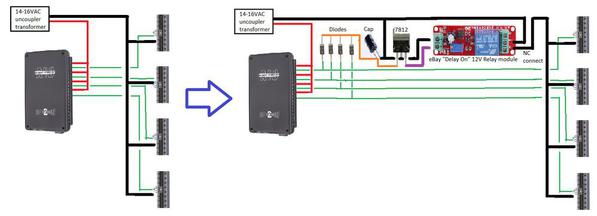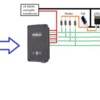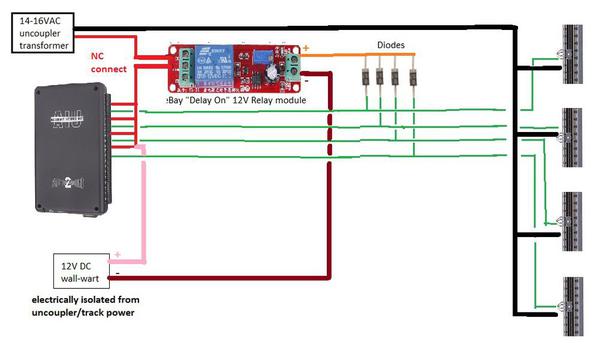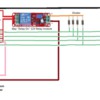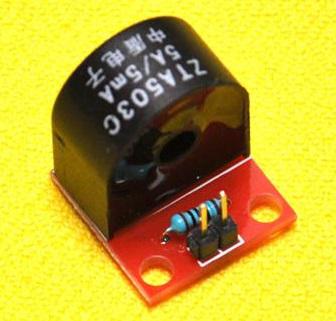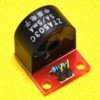Facts:
1. An uncoupling track magnet will overheat and burn up/out if kept on too log.
2. When controlling an accessory through the remote and AIU, you have 3 options: on; off; act. The first two toggle a relay on or off. The last activates the relay only while the button is pressed. [This assumes all is working correctly]
3. An AIU accessory circuit can be used to control an uncoupling track.
4. It is an easy mistake to press the on button instead of act, and then paragraph 1 of this post becomes applicable. [I'd like to see MTH revise the remote software to permit limiting the available selections for each accessory.]
5. It would be great to safely use a remote & AIU to control uncoupling tracks.
6. A thermal circuit breaker does not blow immediately upon an overload, but after a brief interval, whose duration is in inverse proportion to the amount of overload
7. I checked the current draw of an old Lionel UCS track and a more modern Gargraves track, and my AC ammeter indicates the former draws about 1.6 amps and the latter about 2.7. This may vary among tracks.
8. Rarely would 2 uncoupling tracks be intentionally activates simultaneously.
Conclusion:
If I were to feed the uncoupling track power through a manual reset thermal breaker with a rating slightly UNDER the amps that an uncoupling track draws, the breaker should open after an interval long enough to permit the uncoupling of a car.
Application:
If I feed the center terminals of the AIU relays that control UCS tracks through a manual reset thermal breaker of around 1.5 amps, and those controlling Gargraves through such a breaker rated 2.25-2.5, I should have adequate protection against burnout. Since only one or two breakers would be needed, this is more cost effective than trying to have a time-delay cut-out relay on each track.
Comments:
Any?




